Click on images to enlarge
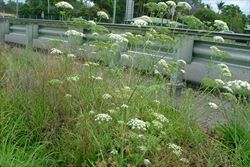
habit (Photo: Sheldon Navie)
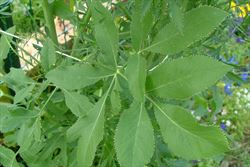
lower leaf with large, relatively broad, segments (Photo: Sheldon Navie)

stem and finely divided upper leaf (Photo: Sheldon Navie)
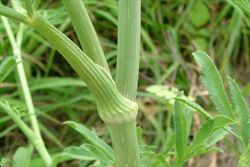
close-up of stem showing sheath-like base of leaf stalk (Photo: Sheldon Navie)

large compound flower cluster (Photo: Sheldon Navie)
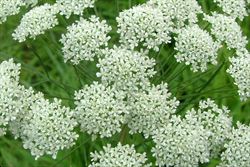
close-up of flowers (Photo: Sheldon Navie)

underside of flower cluster, showing numerous branches radiating from the same point (Photo: Sheldon Navie)
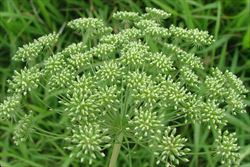
clusters of young fruit (Photo: Sheldon Navie)

close-up of immature fruit (Photo: Sheldon Navie)
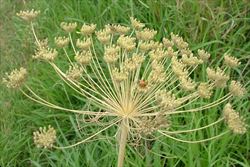
clusters of mature fruit (Photo: Sheldon Navie)
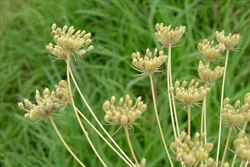
close-up of mature fruit (Photo: Sheldon Navie)
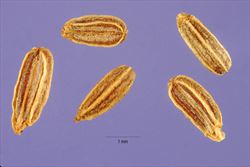
close-up of seeds (Photo: Steve Hurst at USDA PLANTS Database)

habit (Photo: Sheldon Navie)
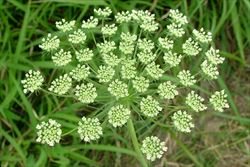
young flower cluster (Photo: Sheldon Navie)

one of the almost flat-topped flower clusters from side-on (Photo: Sheldon Navie)
Scientific Name
Ammi majus L.
Family
Apiaceae (Queensland, New South Wales, the ACT, Victoria, Tasmania, Western Australia and the Northern Territory)Umbelliferae (South Australia)
Common Names
bishop's flower, bishop's weed, bishop's-weed, bishopsweed, bullwort, common bishop's weed, false bishop's weed, false Queen Anne's lace, greater ammi, lace flower, lady's lace, large bullwort, meadow sweet, meadowsweet, Queen Anne's lace
Origin
Native to northern Africa, the Azores, the Madeira Islands, the Canary Islands, southern Europe and western Asia.
Naturalised Distribution
This species is widely widely naturalised in southern and eastern Australia. It is common in south-eastern Queensland, southern and eastern New South Wales, Victoria, south-eastern South Australia and south-western Western Australia. Also present in Tasmania and in other parts of Queensland, New South Wales, South Australia and Western Australia.
Notes
Bishop's weed (Ammi majus) was introduced as a garden plant, and is sometimes still grown in cottage style gardens. It escaped cultivation many years ago and is mainly seen as a pest of crops (e.g. cotton), pastures and disturbed sites, but it also grows in natural habitats and can be a significant problem in some areas. It is mainly regarded as an environmental weed in New South Wales and Victoria.
This species is probably of most concern in inland New South Wales, where it is a problem in several threatened semi-arid plant communities. Weed invasion from bishop's weed (Ammi majus) and other invasive weed species is seen as one of the main threats to natural temperate grasslands in the Brigalow Belt South bioregion in inland northern New South Wales. Bishop's weed (Ammi majus) is also one of the most common weeds invading "native vegetation on cracking clay soils in the Liverpool Plains region", which is listed as an endangered ecological community. It has also been recorded in conservation areas in coastal districts of this state (i.e. in Yarragee Reserve on the south coast and McKay Reserve in the Sydney region).
In Victoria, bishop's weed (Ammi majus) is listed as an environmental weed in the Goulburn Broken Catchment and is seen as a threat to the endangered Gorae leek orchid (Prasophyllum diversiflorum) in this state. In fact, weed invasion is regarded as the most serious threat facing this rare orchid, and bishop's weed (Ammi majus) is one of the most common and aggressive weeds present in areas where this orchid is still found.
In other states of Australia, bishop's weed (Ammi majus) is generally noted to be a weed of roadsides and disturbed sites. However, it is reported to grow in disturbed and undisturbed natural vegetation between Gingin and Albany in south-western Western Australia.

